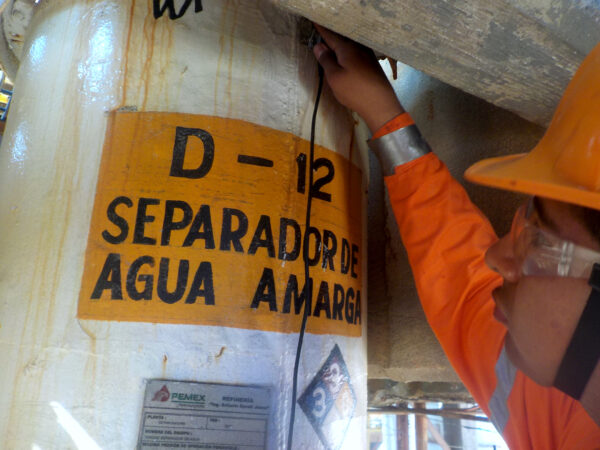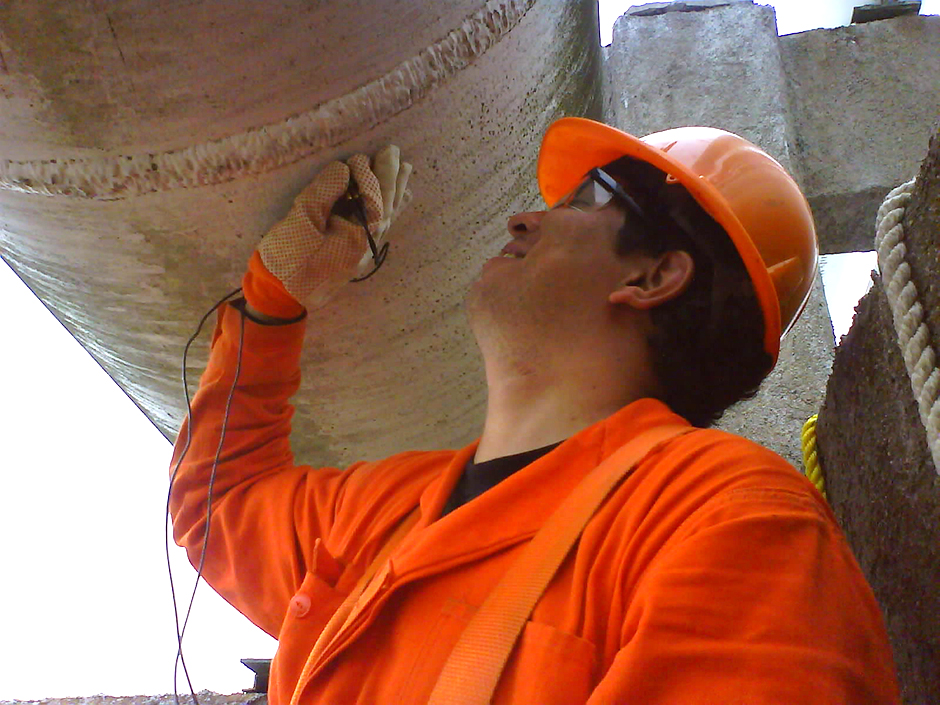
Ultrasound
The ultrasound inspection method aims to detect internal discontinuities in metallic and non-metallic materials.
It is a volumetric inspection method.
It is based on the emission by a transducer (probe) of a beam, or a set of high frequency sound waves (greater than the audible capacity of the human ear) that are introduced into the test material to propagate in it until localization a heterogeneity as a consequence of the interface of two different materials, discontinuities or defects of the material, which will produce reflection, attenuation and diffraction phenomena.
The ultrasound method is also used to detect surface defects, and to define characteristics of the material’s surface, such as corrosion measurement, and thickness measurement.
Advantages
Disadvantages
- Superior penetration power, which allows the detection of defects under the surface of the material.
- High sensitivity, allowing the detection of small defects.
- Greater accuracy is possible to determine the position of internal defects, size, orientation, shape and nature.
- Only one surface is required to examine the part in question.
- Operation is electronic, providing almost instantaneous indication of defects.
- Volumetric scanning capacity, allowing inspection of a volume of metal that extends from the front surface to the back surface of a part.
- The operation requires experienced technicians
- Extensive technical knowledge of the technique is needed to apply it correctly, so the training required is greater than that of other inspection techniques.
- Parts that are rough in surface, irregular in shape, very small in size, or of very thin thickness, or made of non-homogeneous materials are difficult to examine.
- Discontinuities that are close to the surface may not be detected.
- Requires the application of coupling for a transfer of energy between the transducers and the parts that are examined.
- Reference standards or standards are required to calibrate equipment and for characterization of defects.

Grupo PIESADEC has personnel certified as Level II by ISO-9712 and / or SNT-TC-1A in Industrial Ultrasound and with Ultrasound equipment for thickness gauges and calibrated and certified fault detectors.
